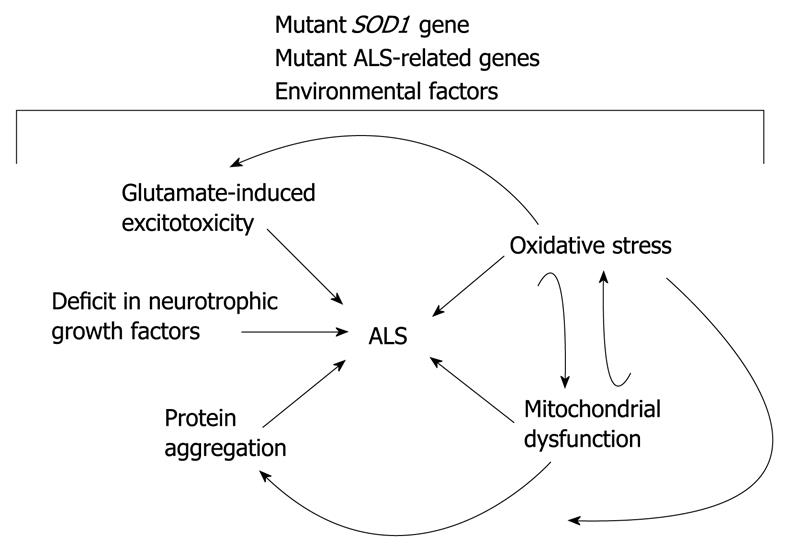Copyright
©2010 Baishideng Publishing Group Co.
World J Biol Chem. May 26, 2010; 1(5): 62-68
Published online May 26, 2010. doi: 10.4331/wjbc.v1.i5.62
Published online May 26, 2010. doi: 10.4331/wjbc.v1.i5.62
Figure 1 Schematic representation of potential mechanisms associated with the pathogenesis of amyotrophic lateral sclerosis (ALS).
Mutations in superoxide dismutase-1 (SOD1) and/or other genes and environmental factors are responsible for the activation of the pathogenic mechanisms that lead to ALS. Several pathogenic mechanisms have been proposed. (1) Glutamate-induced excitotoxicity: overstimulation of neurons by glutamate causes the accumulation of calcium ions in cellular compartments, which leads to activation of apoptotic pathways; (2) Oxidative stress that is caused by an imbalance between the production of reactive oxygen species and antioxidant defenses; (3) Protein aggregation: oxidative stress and mitochondrial alteration could be responsible for protein aggregation; mutant SOD1 protein or other ALS-related genes tend to be misfolded or form aggregates that, in turn, trigger a toxic cascade that leads to neuronal degeneration; (4) Mitochondrial dysfunction, which leads to oxidative stress, decreased activity of respiratory complexes, decreased ATP levels and cytochrome c release; and (5) Deficit in neurotrophic growth factors, including insulin-like growth factor 1, and activation of proteolytic systems.
- Citation: Musarò A. State of the art and the dark side of amyotrophic lateral sclerosis. World J Biol Chem 2010; 1(5): 62-68
- URL: https://www.wjgnet.com/1949-8454/full/v1/i5/62.htm
- DOI: https://dx.doi.org/10.4331/wjbc.v1.i5.62









